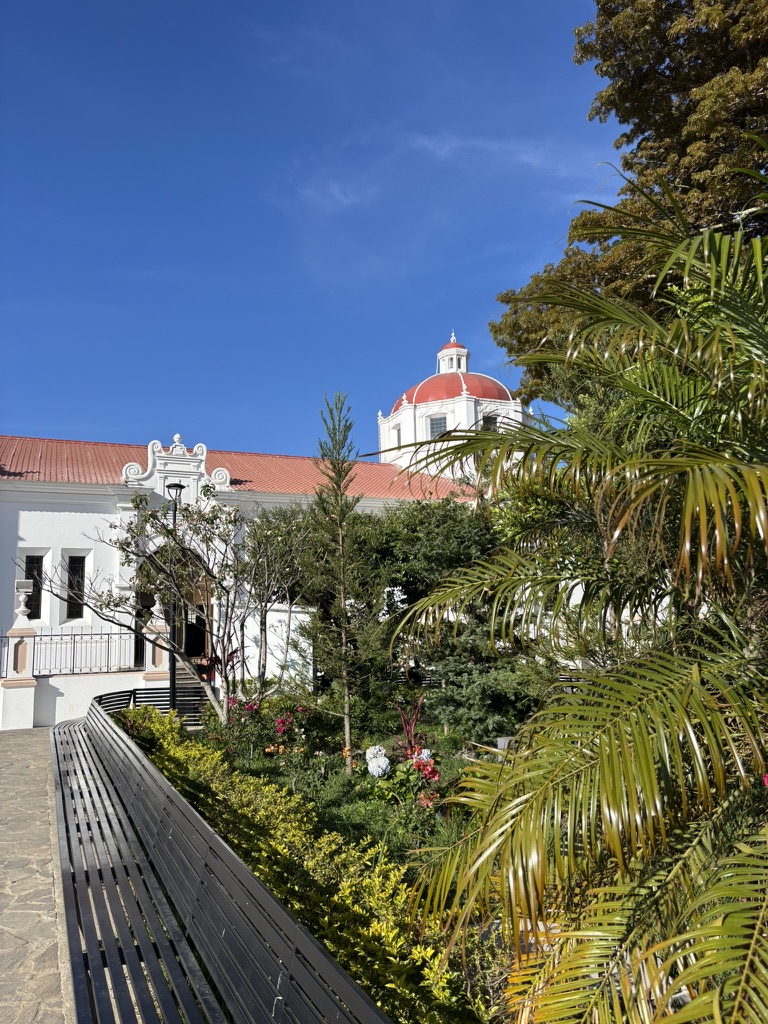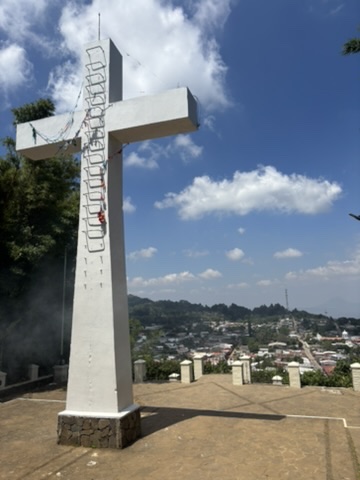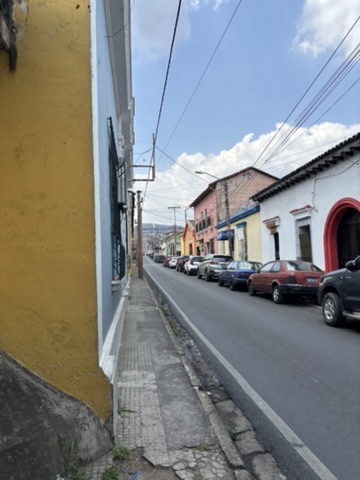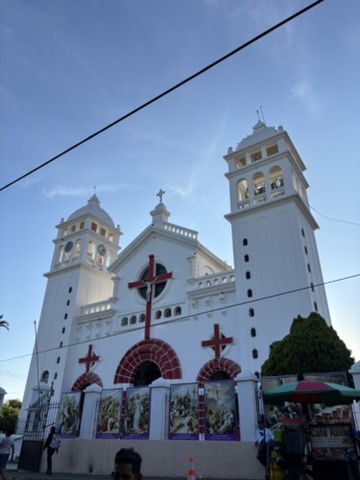
Bus to Nowhere
After the bus pulled into Concepción de Ataco, we opened Google Maps to begin the tour Luis had planned for us. The first stop was a mirador, or lookpoint, that supposedly featured a giant cross. We made our way up a winding stone path, at times doubting we were headed in the right direction, and reached a clearing with no clear marking and several different options about which way to head.
“Over here,” a voice called from a shady area under a tree to our right. We walked over that way, and were greeted by an elderly couple selling fruit and cold water. They pointed us the right way, and to return the favor we bought a bag of fresh jocote, or Salvadoran plums. Some were bright red and sweet, while others were a tart green. We continued along the path, hoping our stomachs would handle our transgression from the golden rule of travel: if you can’t boil, cook, or peel it, forget it. We spat the cores into the bushes and methodically ate our way through the entire bag.
Another clearing gave way to a large white cross and a spectacular view of Ataco, whose colonial grid-style layout and colorful houses looked mesmerizing from above. We cross-referenced our walking path with what we saw, and determined that we could easily follow a central thoroughfare to the main town square. More vendors greeted us as local teenagers hung out on benches in the area around the lookout point.
Trudging back down the path, we reached a stunning blue church and attempted to peek inside. The gate was open — perhaps a reflection of El Salvador’s eye-catching safety turnaround in recent years — but the church itself was locked. We continued down the central road, stopping for a coffee in a boutique café before arriving at Ataco’s main church and central park. I managed to grab a few pupusas and a cold Coke as we sat and people watched to regroup. We wandered through the leafy park, complete with a fountain whose refreshing mist helped cool us off, and into the main church. The decor was fascinating: it departed from the standard Catholic style found in Europe, but had some of its central elements (especially architecturally) infused with a Latin American flair. We sat for a moment, then walked back to where the bus had dropped us off, grabbing an ice cream cone along the way.
I remarked how smooth our journey had been thus far. We hopped on the next bus, which had our next destination, Apaneca, written in calligraphy on its dashboard. We settled in for the quick journey, but after about ten minutes I opened my phone to check where we were. Logically, it would follow that buses with multiple destinations could head in either direction, but for some reason we didn’t even bother to check. We were going right back to where we came from. After realizing, and laughing at, our mistake, we hopped off the bus in Ahuachapan and attempted to look for the next ride to Apaneca.
Once again, if the bus had multiple destinations, it was likely making a loop. We noted that we could have just stayed on that bus, and this time our realization was slightly more irritating than humorous. Even so, we eventually made our way to Apaneca. I quite enjoyed its slower pace: it seemed like mostly locals were sitting in its numerous cafés or on the benches in its green parks. We grabbed another coffee to boost our moods, and meandered over to the central church. A wedding procession was going on, and guests in their colorful, elegant attire were flooding in the pews of the church. The breeze rippled through the spring air as we watched, content, and decided to call a taxi to our final destination of the day, Juayua, to save time and preserve our sanity.






